Review: Nokia Lumia 1520 for AT&T
Nov 21, 2013, 9:35 AM by Eric M. Zeman
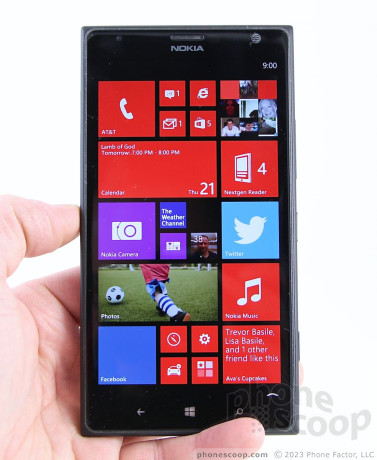
Nokia's latest Windows Phone is a spec monster. The Lumia 1520 has it all: a huge screen, zippy processor, powerful camera, and connectivity galore. What's not to like?
Form
Is It Your Type?
Nokia goes all-out with the Lumia 1520, a phablet in the truest sense of the word. If you don't mind using two hands with your device, and like what Nokia has done with Windows Phone, the 1520 could be the big-screened phone for you.
Body
The Nokia Lumia 1520 is the biggest modern smartphone made by Nokia, and the largest Windows Phone device available. It has a 6-inch screen, which means it has near-tablet dimensions (6.41 x 3.36 inches). It dwarfs all of Nokia's other smartphones. When laid side-by-side with the (not-small) Lumia 1020, the 1020 looks like a toy. The 1520 is about the same dimensions as the competing Samsung Galaxy Mega and HTC One max. It's an over-sized phone, for sure. I took it out with me one evening and about half the people who noticed it asked "Is that a phone?" while the other half asked "Is that a tablet?" Yes.
The 1520 is perhaps the most attractive large-screen smartphone in the market. Nokia chose the styling cues perfectly. It is plain and simple, and that's exactly what makes the design work so well. We're reviewing the black version, but it is also available in white, red, and yellow (I wish it came in cyan!) Compared to the HTC One max, the 1520 simply comes off as classier and more elegant. There are no lines or panels or distracting design elements. Nokia is letting the size and display speak for themselves.
Like nearly all Lumia smartphones from Nokia, the 1520 is formed from solid polycarbonate. The black version has a matte finish that I particularly liked. The sides are gently rounded and comfortable, though the four corners are somewhat pointy. At 3.36 inches wide, it's difficult to get a handle on. For example, I can't wrap my fingers all the way around it. Thank goodness it is only 8.7mm thick. Its slim profile helps it slip easily into pockets, but the 1520 does not fit comfortably in small pockets or tight pants. You need a big pocket (or a purse/bag) to hold this big phone, and you'll know it is there when you walk around.
The front is nearly all glass. There's just a thin bezel where the glass meets the side edges as they curve away. The transition from the screen to the sides is smooth; there's no hard edge. When the display is off, the only thing visible in the jet-black glass is the slit for the earpiece. The Nokia logo vanishes, and the three capacitive buttons are invisible unless the screen is lit up. Again, the design emphasis is on simplicity.
Like the majority of Nokia's Lumia devices, all of the major controls are placed on the right edge of the phone. The volume toggle is closest to the top, with the screen lock in the middle, and the dedicated camera button towards the bottom. All three buttons share a slim profile. They can be somewhat hard to locate, and the volume toggle should be much further away from the screen lock button. Small nubs on the volume toggle might help. Each button has good travel and feedback, and the camera button has two well-defined stages for focusing and snapping shots.
Nokia hid the SIM card tray and the memory card slot in the left edge of the 1520. You need a tray tool or paper clip to eject the trays, which is sort of annoying. The memory card should be accessible without requiring a tool. The trays are flush with the surface, so they won't get snagged on anything. The headphone jack is on the top and the micro-USB port is on the bottom.
Since the 1520 is made from a unibody polycarbonate shell, there is no battery cover; the back is smooth, save for the camera module. You can't replace or pull the battery, which some might dislike, but the 1520 will charge wirelessly and there are contact pins plainly visible on the back for docking accessories. The camera module creates a little mound near the top, but it is nowhere as egregious as the Lumia 1020's bulge for its PureView imaging unit.
The 1520 is a massive device, but also quite possibly the best-ever from Nokia. The design, materials, colors, and manufacturing all come together in one excellent piece of hardware.
Performance
Screen
Among the Lumia 1520's list of "firsts" is the display. It's the first Windows Phone to feature a 6-inch screen, and the first to have full 1080p HD resolution. Like Nokia's other smartphone screens, it is an LCD with Nokia Clear Black and Gorilla Glass. It looks great. Everything on the screen is bright, clean, and colorful. The colors are all accurate, and viewing angles are excellent. It's a very good display.
Signal
AT&T is the exclusive seller of the Lumia 1520 in the U.S. We tested the device around northern New Jersey and found it to perform well on AT&T's network. Calls all connected on the first attempt and the 1520 didn't miss any nor drop any during our review period. Data performance was strong on both HSPA and LTE. Even when signal conditions weren't their best, the 1520 still managed to fire off emails, update Twitter, and even upload images. I'd rate the 1520 above par as far as AT&T devices go.
Sound
All of those phone calls connected seamlessly, but they didn't sound that great. Our 1520 produced a loud and distracting hiss in the earpiece. I made a number of calls from different cell sites to make sure it wasn't a local issue. The 1520 hissed at me every time I made a call. Aside from the hiss, voices were clear in the earpiece. Set all the way up, the volume was OK, but far from good. I was able to hear calls in my home or car, but not in a noisy restaurant. You may need to find a quiet retreat when making important calls. Those with whom I spoke through the 1520 said I sounded very good. The speakerphone also produces the hiss, but it is somewhat less noticeable. Calls sent to the speakerphone sounded better than the earpiece. I wish the speakerphone could get a little bit louder, but it should suffice for most people. Ringers and alert tones were good, and the vibrate alert was strong.
Battery
In a word, great. The 1520 has a 3,400mAh battery and Nokia claims it offers up to 25 hours of talk time. What I can tell you is that I got well more than a day out of a single charge. Frugal users might see close to two days of battery life, and even power users can be confident they'll get through at least one full day. The 1520 offers very good battery life, especially considering the size and feature set.
Basics
Menus
The 1520 runs an updated version of Windows Phone 8. Microsoft and Nokia had to tweak the code in order for Nokia to create the 1520. Before the 1520, the highest-resolution display of any WP8 device was 1280 x 768, and WP8 devices couldn't use quad-core processors. Now they can, and the 1520 is the first W8 device to use Qualcomm's excellent Snapdragon 800 processor. These are all under the hood changes, but there's one massive user-facing change in the update that makes a world of difference: the Start screen now has an extra column for Live Tiles.
As far as I am concerned, this extra column is what's been missing from the WP experience from day one. I like the WP Start screen set-up, but always felt the Start screen was too cramped, no matter how big the display. On the 1520, you have a massive display and plenty of space for apps, shortcuts, and Live Tiles on the expanded Start screen. It gives you access to far more apps at once. I finally feel like I can get all my key apps on a single screen. I really, really like it. As on all Windows Phone devices, the Live Tiles can take three different shapes: small square, large square, or large rectangle. The Tiles can be resized and rearranged however the user chooses. The best part of the Tiles is that they also act as widgets and can be set to display active, changing content, such as unread counts in your inbox, or the latest top story in your Facebook feed.
The 1520 has a clock that appears on the screen when the phone is not being used. Nokia calls this feature "Glance" and it can be turned off if you wish. This clock is easily visible when the 1520 is sitting on a desk. It can also be set to "night mode" which makes the clock red so it is easier on your eyes if you get up in the middle of the night.
The lock screen has its own clock, which is paired with the date. The lock screen can be set to include alerts, if you so choose, and the alerts can be prioritized. The notifications pop up on the lock screen to tell you how many unread messages or missed calls you might have. You have to unlock the 1520 to access those messages or calls.
The full app menu is accessed by swiping the Start screen to the left. It lists all the apps installed on the 1520 in alphabetical order. This screen cannot be customized, nor can the settings screens, which are packaged together in their own text-only menu.
The 1520 has a quad-core 2.26 GHz Qualcomm Snapdragon 800 processor. It's one of the best chips available, and delivers a fantastic experience on the 1520. Windows Phone is a fast operating system and it was extremely quick on the Lumia 1520. I didn't experience any trouble running apps, transitioning from screens, or multitasking. It's a fast phone.
Calls and Contacts
The WP8 phone app functions the same across all WP8 smartphones. It is a stark and simple app that doesn't take much brain power to master. When opened, the call history is the default view. There are four main functions: voicemail, dialpad, contacts, search. The buttons are laid out plainly and include the features most people expect of their devices these days, including the ability to mute or hold calls, merge calls, or route them to the speakerphone or Bluetooth.
Thanks to its WP8 operating system, the Lumia 1520 has one of the best contact apps available on a smartphone. Microsoft thinks the people in your life are more important than serving as sterile "contacts," and has thus named the contact app the People Hub. The Hub is not just a list of phone numbers and email addresses. It is a much more involved space that ties in users' Facebook, LinkedIn, and Twitter profile data. It provides a virtual flood of status updates and posts to go along with the faces and phone numbers.
Messaging
The 1520 covers all the messaging basics, which include email, SMS/MMS/IM, Skype, social networking, and so on. There is only one email app, but it can handle any type of email account, including Gmail, Exchange, and other internet-based email types. Perhaps its best feature is that it lets you pull multiple email accounts into a single inbox.
There is a single app used to handle all non-email messaging tasks. The messaging app includes text and picture messages, instant messaging, Facebook messaging, and Skype. Some may appreciate having all these messages locked down in a single place. What I like best is that it will link SMS and Facebook conversations with the same contact into a single thread rather than keep them separate.
Other WP8 messaging tools include Groups and Rooms. These are both subsections of the People Hub. They essentially let you manage, communicate with, share photos with, and coordinate calendars between small groups of people.
Though the People Hub incorporates Facebook and Twitter for basic messaging, you're better off downloading the full Facebook and Twitter apps from the Windows Phone Store for full functionality. They aren't pre-installed.
Extras
Media
There are multiple avenues through which to find and play back content on the Lumia 1520. All Windows Phones include Microsoft's XBox Hub. The XBox Hub and its accompanying store are the best choice for people who've invested in Microsoft's other platforms, including Windows machines and the XBox gaming device. The store offers plenty of selections for music, movies, and television shows, and allows you to rent or purchase much of it. The XBox Hub also houses the basic media player through which you'll listen to music or watch movies, even those you've side-loaded via USB.
Only Nokia phones include Nokia MixRadio, (formerly Nokia Music,) Nokia's own content store. It, too, lets users purchase music, and also includes 150 streamable radio stations, personalized music recommendations, and a tool for searching local live performances. Premium features, such as an unlimited number of track downloads, cost $3.99 per month.
The 1520 also ships with AT&T Live TV. It requires an active cellular connection to work and offers streamed television content. It costs $10 per month to use and I don't see much value in it. That said, the service works well on both AT&T's HSPA+ and LTE networks, though it spent a little bit less time buffering videos when used over LTE. Last, the 1520 also has AT&T Radio. Like AT&T Live TV, it is a for-pay streaming service. It includes a number of radio stations broken down by genre. It costs $5 per month to subscribe.
Camera
Nokia has entirely too many camera applications. There's the basic Windows Phone camera app, but the 1520 also has Nokia Camera, Nokia Smart Cam, Nokia Refocus, Nokia Cinemagraph, Nokia Glam Me, and Nokia Panorama. Each of them is slightly different, though Cinemagraph and Panorama are really just “lenses” for the WIndows Phone camera app. We've already reviewed the WP camera, Smart Cam, and Nokia Camera in-depth here, so we'll just touch on them lightly before focusing on the newest features.
The basic WP camera app is simplistic to a fault. It includes only the most basic shooting functions and modes, but it opens, focuses, and shoots photos quickly. The dedicated camera button can be set to open this app if you want, but it is by default set to open the Nokia Camera app. The basic WP camera is the best app for regular people who just want to take pictures and don't care to futz with controls.
The Nokia Camera app (formerly “Nokia Pro Cam”) is a professional-level application that is beyond compare. It's not suited to beginners. It gives users full control over all the possible settings through a unique, ring-like user interface. For example, ISO can be set anywhere from 100 to 4000, shutter speed can be set anywhere from 1/16,000th of a second to 4 seconds, and focus can be set to toggle between macro and infinity. The long exposure tool is particularly interesting because it opens up a wide range of creative nighttime imaging. For people who understand how each of these factors interacts with the others to produce a result, the level of control is unparalleled on a smartphone.
Nokia Smart Cam is for capturing bursts, Nokia Cinemagraph is for creating animated GIFs, Nokia Panorama is for creating (duh!) panoramas, and Nokia Glam Me is for taking glorified selfies. Each of these apps is easy to figure out and produces good results.
The 1520 supports lossles zoom, though not to the extent of the 41-megapixel Lumia 1020. It allows you to zoom in and reframe images after the fact without losing any resolution. You can't zoom in as far with the 1520 as you can with the 1020, though. But hey, at least it's something.
The real new feature is Nokia Refocus, which allows users to choose the point of focus after the photo has been taken. The trick to getting this app to work is having a good subject. You need a foreground, middleground, and background for this app to really work as it is intended. You also need to be able to get close to the foreground portion of the shot. The app essentially shoots several seconds of video, focusing on the foreground portion of the image, the middle portion, and then the far background. After it processes the image, you can select one or all of the focal points to be in focus. If you choose one focal point, the app blurs the rest of the image to change the depth of field. The app also includes an automatic color isolating feature. For example, I took a picture of some pumpkins and using this feature made everything in the image black and white except for the pumpkins. The pumpkins remained orange.
Last, and not least, the Lumia 1520 supports RAW imaging. This means you can take pictures and then download the full image with no processing. This gives people more control over the end result and edit it they way they want to. Think of it as the digital equivalent to a film negative. Negatives store all the raw data created by taking a picture, but photographers could tweak the resulting image depending on how they treated the negative. The same is true of RAW imaging. Shooting in RAW provides users with more potential for fine-tuning images after the fact. Some camera settings, such as saturation, white balance, and sharpening, are not applied to RAW files, which means the users can adjust them later.
RAW imaging is only available in the Nokia Camera app, and is an option that must be explicitly turned on. It results in massive files (tens of megabytes) compared to what most cameras produce. The experience of taking RAW images doesn't differ from normal picture taking, and the 1520 also captures a regular 5-megapixel image at the same time that can be used/shared easily from the phone. RAW photos can't be edited on the 1520 itself. They're too big. You have to offload them to a computer before you can do anything useful with them.
Photos
The 1520 has a 20-megapixel camera and it produces good results. Most of the images I captured were in focus, free of grain, and showed proper white balance. Exposure was a bit uneven, however. See the photo of the rose below. You'll notice that the white houses in the background are completely blown out. Further, the shot with the leaves, trees, and brick wall below shows dramatically underexposed trees. Both were tricky shots, with varied lighting, but I think the 1520 should have been able to handle it better than it did. That said, most of the shots look great, plain and simple.
Video
I was impressed by the 1080p HD video I captured with the 1520. The video camera doesn't offer the same robust set of options and features as the main camera. I wish it included slow motion, for example. You can choose to filter out bass, and choose to record in mono or stereo, but that's about it. The results are good no matter how you tweak the settings. The video I shot looked clean with good color and exposure.
If you want to share your video, your best option is to download Nokia's YouTube Uploader app. Windows Phone support for YouTube is notoriously bad. The official app is nothing more than a repackaged version of the mobile web site. The YouTube Uploader app at least lets you sign into your YouTube account and post videos.
Photo Hub
The Photo Hub is Microsoft's version of a photo gallery. The Photo Hub stores all images captured on the phone itself, but also syncs with social media accounts, most notably Facebook. The Hub itself is an active place where you can view your own images as well as peruse those of your social networking friends.
The photo-managing features are typical for most phones and it is easy to move images between folders or share them with others. It's worth the time to set up SkyDrive (Microsoft's free cloud storage service) to automatically back up your photos.
Editing features in the Photo Hub itself are limited to rotate and crop. This is where Nokia's Creative Studio comes in play. Creative Studio lets users apply various filters and effects to change the tone/appearance of their photos. Creative Studio also includes the ability to blur the background, or use a tilt-shift adjustment tool to give photos a unique look. As far as tilt-shift tools go, it works pretty well. Creative Studio has a pretty good feature set for those who like to tweak their images after the fact. Creative Studio is another Nokia exclusive.
Apps
The 1520 is chock full of apps out of the box. There's the typical set of Windows Phone basics, which are joined by nearly a dozen Nokia-branded apps and more than a half-dozen AT&T apps. One thing I like about Windows Phones is that you can easily delete any app from the device, including those that you might consider to be junk.
Bluetooth
The 1520's Bluetooth radio functioned perfectly. Pairing with other devices was mostly painless, and it was able to connect to headsets, speakers, as well as other smartphones and PCs. Call quality was pretty good through a standard Bluetooth headset; I didn't notice The Hiss. Music sounded excellent when pushed through to a Bluetooth speaker.
Browser
Internet Explorer misbehaved on the 1520. For whatever reason, the browser was slow as hell - even when browsing via Wi-Fi. It didn't seem to matter whether the device was loading a full desktop web site or a mobile optimized web site, they all loaded slowly. The Lumia 1020 was much faster. There's no excuse for the 1520 to be slow, not with the Snapdragon 800 on board. At least web sites looked nice on the big screen. IE also doesn't have the powerful bookmark and open tab syncing tools that I like so much in Safari and Chrome. IE continues to be a weak link for WP8 devices.
Clock
As noted earlier, the 1520 puts a great clock on the screen even when it's asleep. This Nokia screen saver means the time is always visible if you want it to be. Otherwise, the clock on the lock screen is a bit small. The appearance of the screensaver and lock screen clocks cannot be changed, however. For example, you can't set them to be analog.
HERE
The GPS radio of the 1520 itself performs perfectly. It pinpointed me quickly and accurately no matter where I was.
Nokia's HERE navigation suite is an incredibly powerful set of tools that not only helps map out directions, but lets you search your surroundings. HERE Maps offers a wealth of features that go head-to-head with the best that Google Maps offers on Android handsets and the iPhone. Some of the associated apps include HERE Drive and HERE Transit. These are individual apps that perform specific functions. HERE Drive plots point-to-point driving directions, while HERE Transit helps manage mass transit route planning.
HERE City Lens (formerly Nokia City Lens) is an augmented reality application for finding nearby points of interest. It works in concert with the camera. You pan the camera around and the app shows you what's in the vicinity. It's easy to pick one of the shops or restaurants it finds and pull up more information and/or details about it.
Microsoft Apps
Some of the useful tools on board most Windows Phones - the 1520 included - are Office and OneNote. Office needs no introduction. On the 1520, you can open/edit Word, Excel, and PowerPoint documents, as well as sync them to your personal (or corporate) computers. OneNote is Microsoft's extensive note-taking and -managing app. It functions similarly to EverNote.
Wrap-Up
The Nokia Lumia 1520 is an excellent device, despite its mammoth proportions. It is one of the biggest handsets on the market, and that is both a blessing and a curse. It means you have a great big screen that can fit more content, but it also means you need two hands more often than not to interact with the phone.
The display, signal performance, and battery life are all excellent, as is the design and build quality of the 1520. It was surprisingly weak in the call quality department, though. It's nice to have extras such as NFC and wireless charging, but access to the battery would have been nice.
The Windows Phone operating system really comes to life on the 1520's large screen, and the expanded real estate on the Start screen makes a huge difference in how users customize their own experience. Nokia's additions to the operating system, through a multitude of its own apps, really help round out the experience.
If you're in the market for a phablet, the Nokia Lumia 1520 is well worth your consideration. If you have reservations about Windows Phone, get over them. The 1520 is a good phone, period.
Comments
I'm surprised
Wireless charging


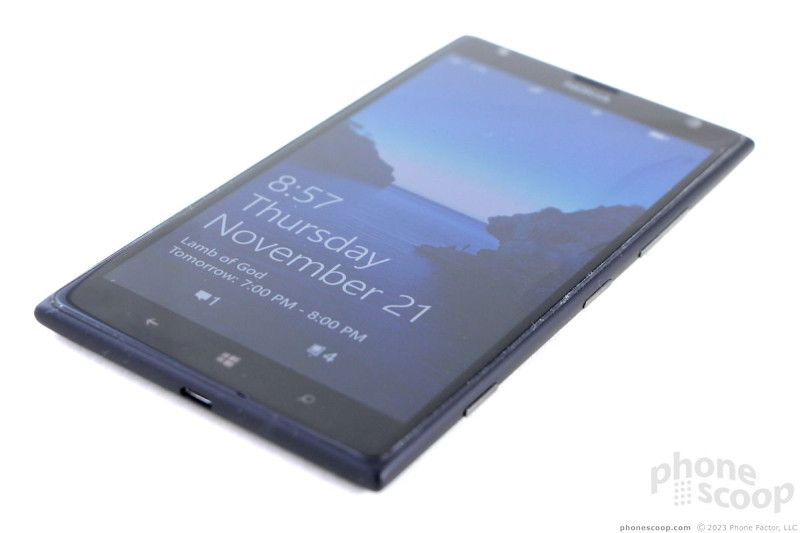















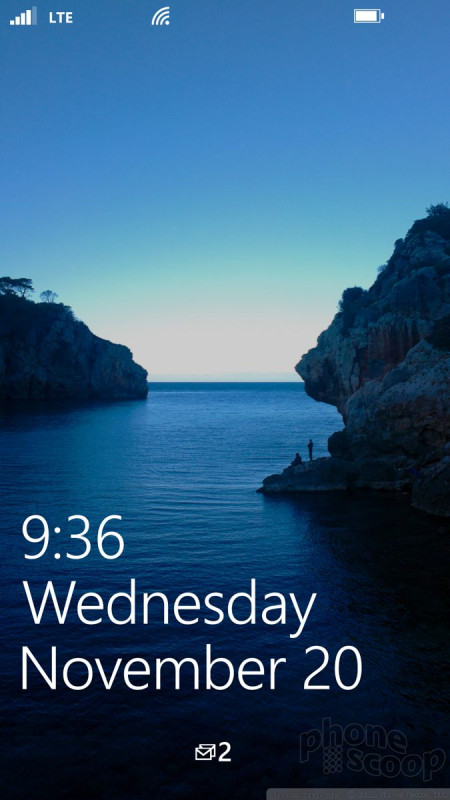


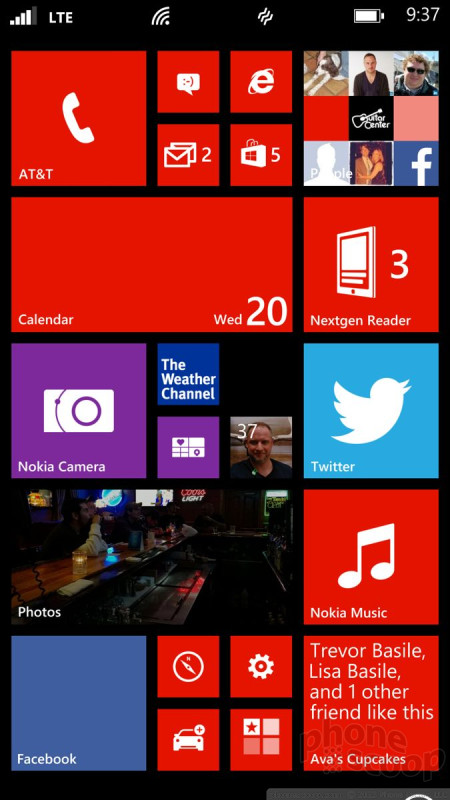




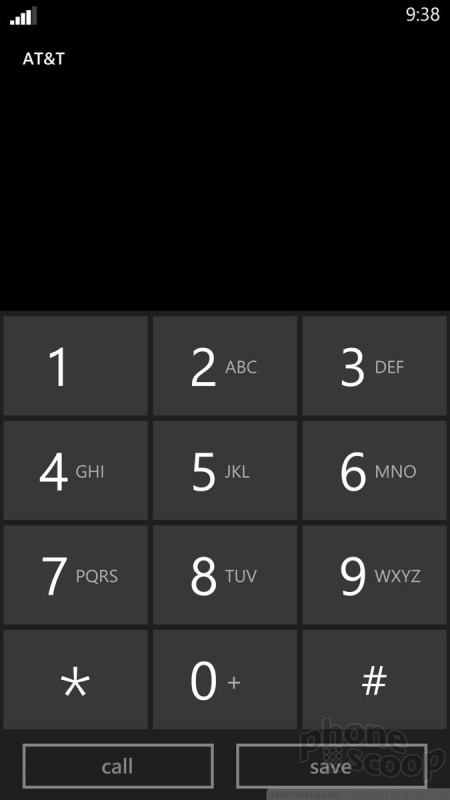


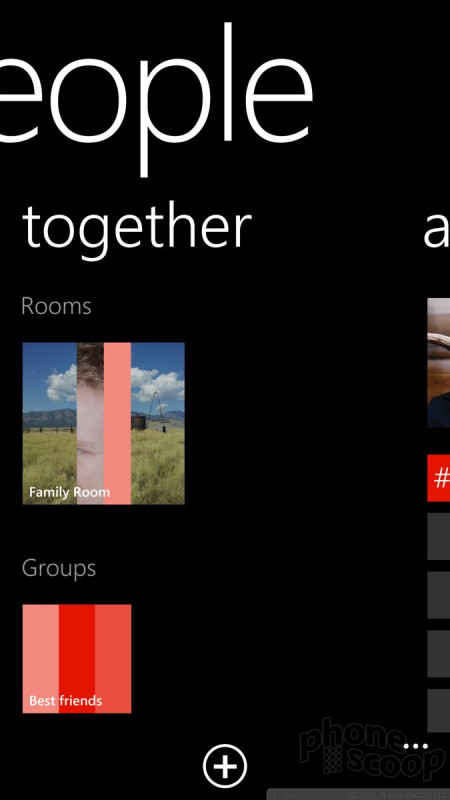



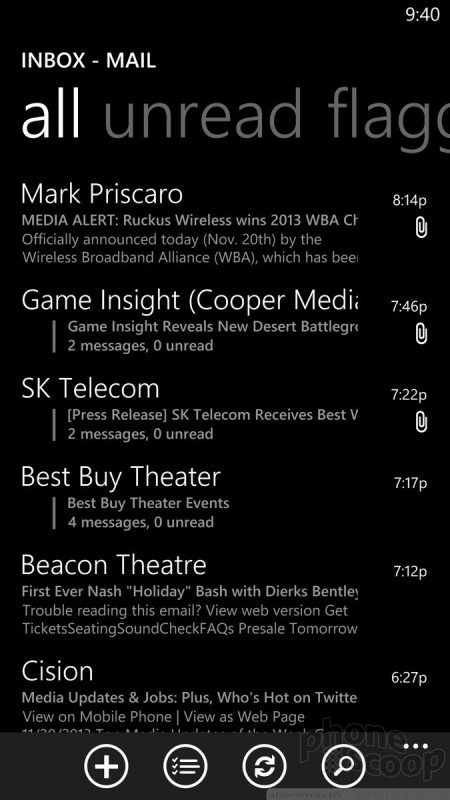





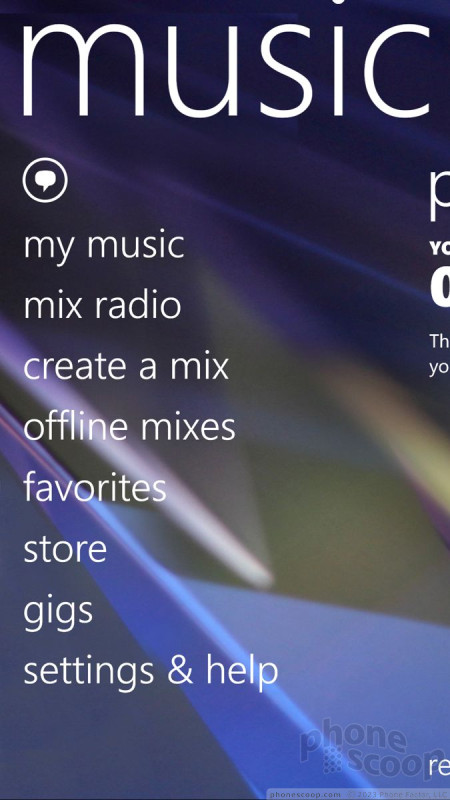












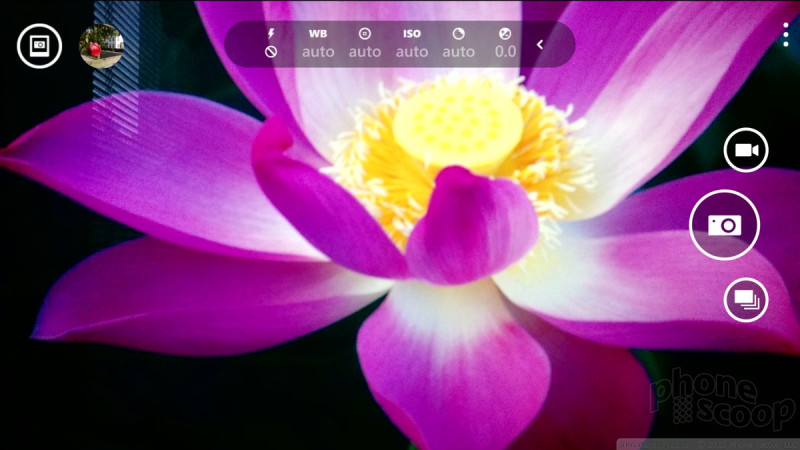





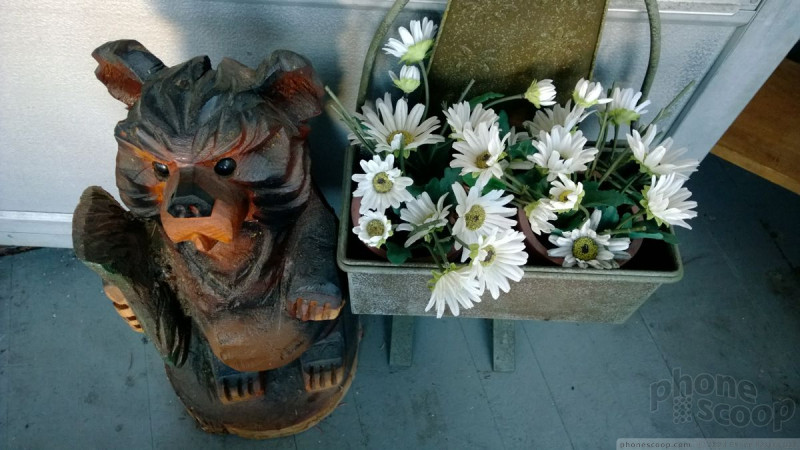

















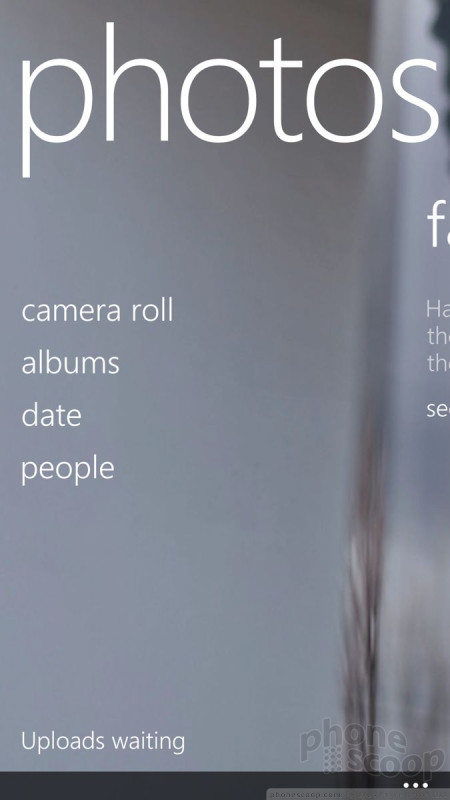




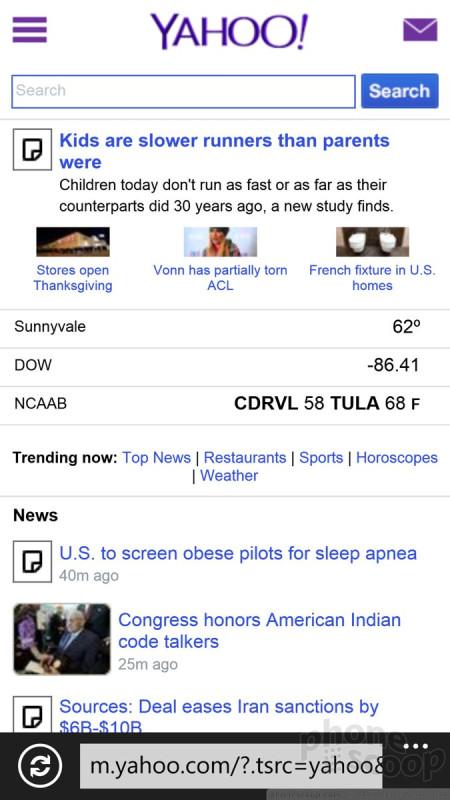




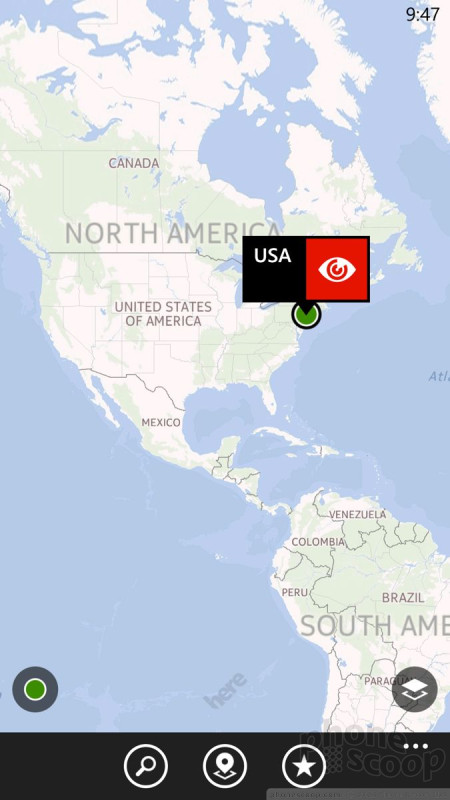





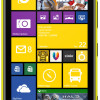 Nokia Debuts Lumia 1520 with 6-Inch HD Screen
Nokia Debuts Lumia 1520 with 6-Inch HD Screen
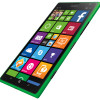 AT&T Debuts Green Lumia 1520 with Windows Phone 8.1
AT&T Debuts Green Lumia 1520 with Windows Phone 8.1
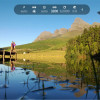 Nokia Camera App Updated with New Features
Nokia Camera App Updated with New Features
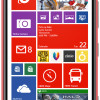 Nokia Lumia 1520 Available for Preorder from AT&T
Nokia Lumia 1520 Available for Preorder from AT&T
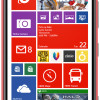 Microsoft to Sell Nokia Lumia 1520 Nov. 15 for $199
Microsoft to Sell Nokia Lumia 1520 Nov. 15 for $199
 Nokia Lumia 1520
Nokia Lumia 1520









